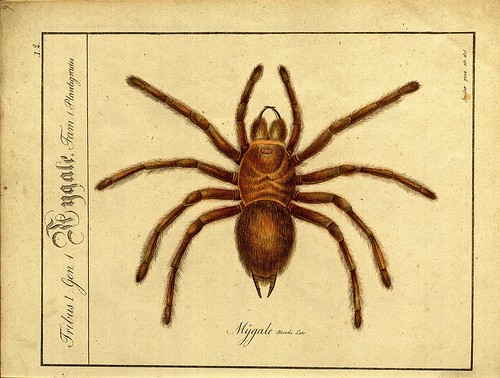
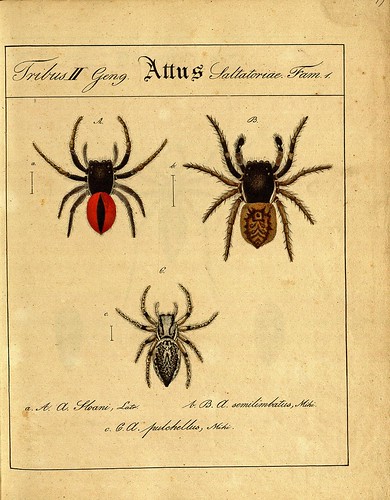



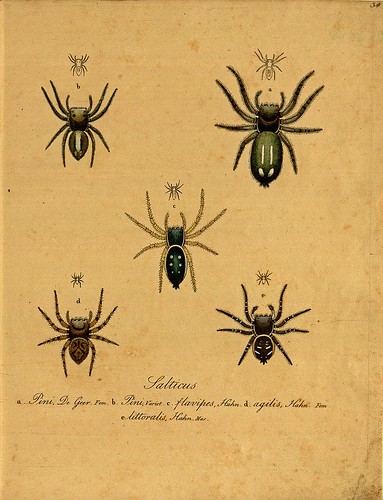
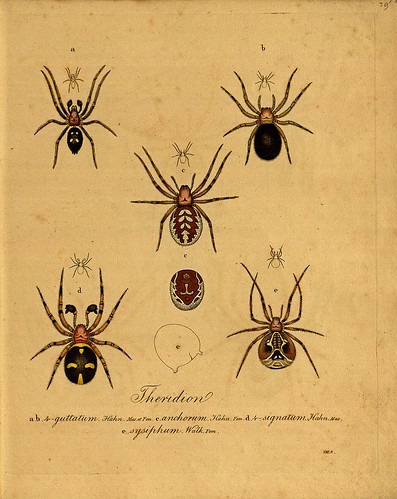

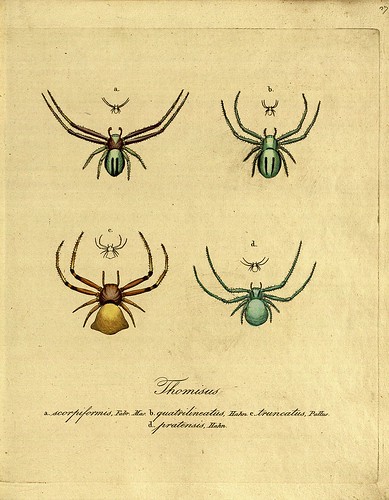
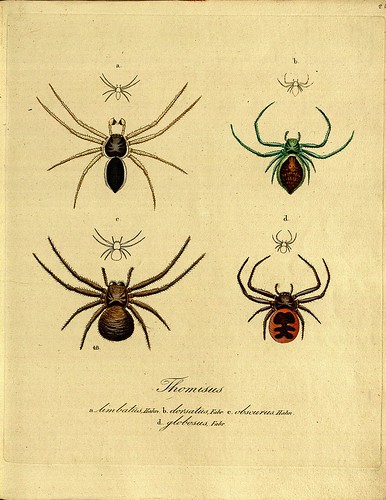
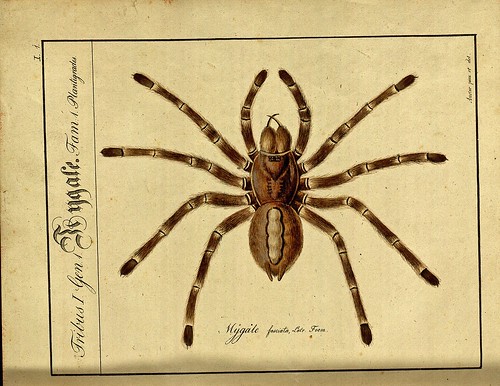


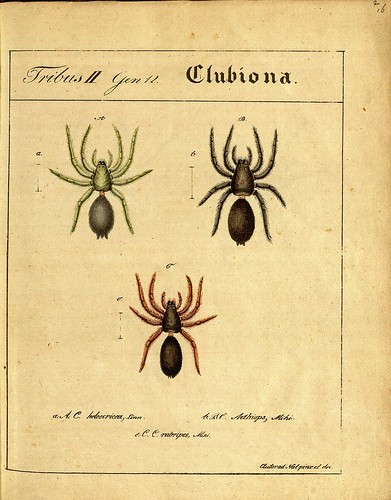
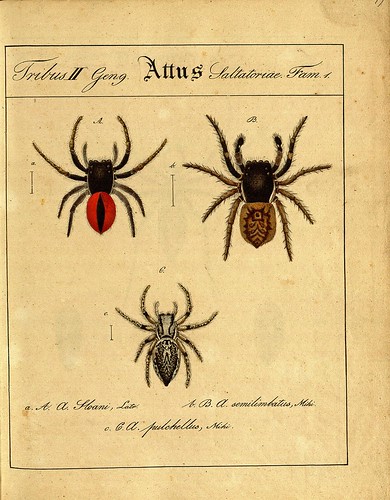
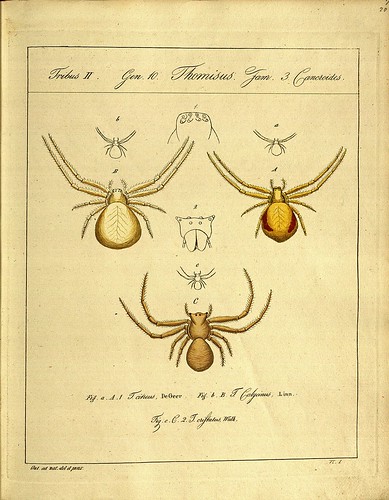
Carl Wilhelm Hahn (1786-1835) was a German zoologist and artist. Following a short stint in the armed services, Hahn completed a PhD and took the unusual step of setting himself up as 'freelance natural historian'.
Biographical details are in short supply but it appears Hahn was at least acquainted with the leading naturalists from Nuremberg and his most important early work involved preparing an ornithological publication on bird species from America, Asia and Africa. It is probable that Hahn contributed artwork to a number of books on insects, spiders and birds.
Hahn's most significant publication was the dual-titled 'Monographie der Spinnen / Monographia Aranearum' (Monograph of Spiders) which was issued in instalments between 1820 and 1836. Of the eight or so (near-) complete copies of this work in the world that have survived, none is apparently a definitive version. The history of the publishing is complicated, involving a change in printers following a quarrel, a small number of subscribers, unauthorised episode issues and, when combined with a sixteen year period of publication, the scarcity of complete works becomes understandable.
'Monographie der Spinnen' was the first ever German monograph on spiders and one of the earliest publications anywhere devoted solely to spiders. Hahn provided the original descriptions of a number of previously unknown spider species together with accurate illustrations, so the work is regarded not only as an important historical scientific document, but is still cited today as a primary source in the field of arachnology.
[Nb. The title tags for the above illustrations were taken from the illustration plates but aren't necessarily consistent or accurate in the 'naming sense'. They were simply chosen quickly to distinguish between the images.]
- 'Monographie der Spinnen' was recently digitised by the University of Heidelberg (click on 'Titleblatt' and then 'Vorschau' for thumbnail pages). I've included half (or maybe a few more) of the available plates above.
- The Wikipedia article is the most useful background reading online. Although it's not necessarily great in terms of readability, it seems to be fairly well researched.
- One of the sources for a lot of the information in the Wikipedia article was the German/English commentary by Peter Sacher that was included in a 1988 reprint of 'Monographie der Spinnen'.
- Previously.
- For the arachnologist.
- I love spiders. I was once sacked from a job painting petrol stations because I was more interested in safely moving resident spider families from the roof eaves during surface preparation than I was in getting the job done quickly. True story.




No comments:
Post a Comment